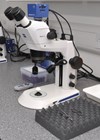In this guide, we aim to provide trainees with novel ideas to maximise learning in the workplace to make the most of your working hours and balance the multiple demands on your time.
They say time flies; and it really does when as a trainee you commemorate two New Year celebrations, with one at August changeover. While this gives rise to the hopeful optimism integral to all new beginnings, the guilt of unmet resolutions is inevitable. The only difference is that the unmet August resolutions will rear their ugly heads as we proclaim following each Annual Review of Competence Progression (ARCP) – “but next year will be different – I will start revising earlier, I will have all my competencies completed before the deadline and I will have that publication / presentation / teaching session done!” In this guide, we aim to provide trainees with novel ideas to maximize your learning in the workplace to make the most of your working hours and balance the multiple demands on your time.
Tips to learn on the go in a ward environment
‘Team Teach’ is a novel approach to learning on the ward round [1]. In this method, the team conduct the usual ward round and as educational needs arise, a senior and junior trainee leave the round to research the key points. This ‘near peer’ method is considered a beneficial method as junior trainees report feeling ‘safer’ to ask questions. The pair then rejoin the team and the junior trainee leads a discussion summarising and consolidating five key learning points.
Tips to learn on the go in an outpatient clinic
A novel variation of Sackett’s Educational Prescription can be utilised to take full advantage of the wealth of learning opportunities that present themselves in an outpatient clinic. This technique involves two clinicians discussing one patient each and then simultaneously reviewing their patients before returning to report their findings to each other and discussing management and future plans. This technique supports social learning methods and can also have clinical benefits in triangulating management plans.
Tips to learn on the go in a theatre setting
The ‘stratified learning’ round, previously described in a paediatric setting [2], can easily be implemented in an ophthalmology theatre environment because of the variety of different learners present, i.e. medical and nursing students, and trainees. As learning needs arise, more team members can contribute to the learning process. For example, if an intraoperative complication arises, the medical student may be asked to describe the anatomical or physiological principles behind the complication, the trainee may be asked to discuss surgical management of the complication and the nursing student may be asked about postoperative management on the ward. This method encourages a multidisciplinary team approach to learning, enables interprofessional learning as well as an appreciation of team members’ roles.
Surgical simulation
Since this article focuses on novel learning methods in ophthalmology, progress made through the advent of simulated ocular surgery are key. Simulated training is rapidly gaining popularity in many occupations. For example, in the aviation industry, pilots are expected to complete simulated training prior to taking control of a plane with repeated simulated training throughout their careers. Similarly, the Royal College of Ophthalmologists also expects trainees to undertake regular simulated training; simulators can be accessed in various locations, one of which is at the Royal College of Ophthalmologists (skills.centre@rcophth.ac.uk). These simulated techniques range from using innovative model eyes which replicate genuine ocular anatomy and textures, to advanced virtual-reality simulators such as the EyeSi™. Studies have demonstrated that simulation shortens the surgical learning curve [3] and, crucially, it improves clinical outcomes with fewer intraoperative complications and shorter phacoemulsification times [4].
These are just a few techniques trainees and trainers can harness to aid learning and teaching. This article is an introduction to a series of articles on this subject. We hope this article helps trainees to implement innovative methods to their daily learning. If you try any of these, or alternative techniques, we would love to hear your feedback and experience.
References
1. Crawshaw A. ‘Team Teach’: a novel approach to ward round teaching. Medical Education 2010;44(5):499.
2. Reece A, Klaber R. Maximising learning on ward rounds. ADC Education & Practice 2012;97(2):61-7.
3. Selvander M, Asman P. Virtual reality cataract surgery training: learning curves and concurrent validity. Acta Ophthalmol 2012;90(5):412-7.
4. Belyea D, Brown S, Rajjoub L. Influence of surgery simulator training on ophthalmology resident phacoemulsification performance. J Cataract Refract Surg 2011;37(10):1756-61.
Take home message
-
Novel and creative learning methods can be implemented in various clinical settings.
-
‘Near peer’ learning is considered a beneficial and effective training method harnessing positive working relationships with reduced hierarchy.
-
Surgical training can be augmented by the use of simulation equipment, which is proven to shorten the learning curve and improve clinical outcomes.
COMMENTS ARE WELCOME









